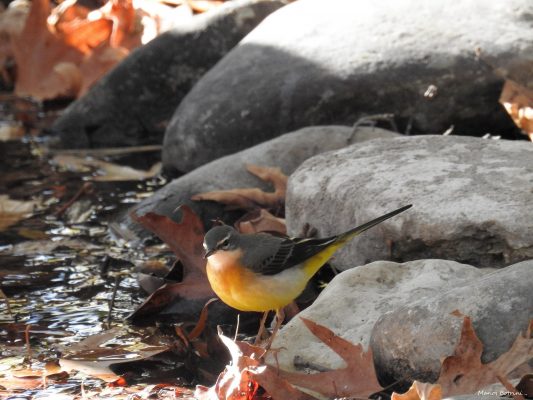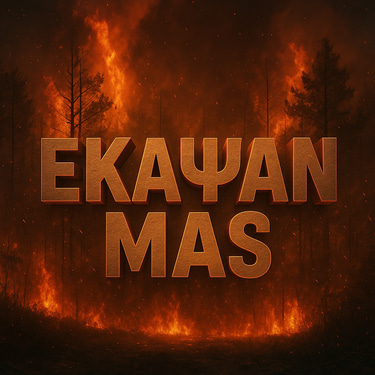Limassol MOUNTAIN FIRES 2025
LEARN about the villages evacuated, the total destruction of over 120km², the dead, the injured, the lives lost and the stories of survival and solidarity. photos, videos and volunteers from the fire front!
🐾 Wildlife in the Affected Zones of the Limassol Mountains
The 2025 fires in the Limassol Mountains destroyed critical habitats, wiping out microfauna (insects, pollinators, reptiles) that form the basis of the food chain. This loss leads to a dramatic reduction in birds, mammals and the biodiversity of the area in general.
✍️ Team fothkia.com
8/17/20253 min read


The July 2025 fires in the Limassol Mountains were the largest ecological disaster to hit Cyprus in peacetime. In just 24 hours, over 120 km² of forest, farmland and communities were destroyed. The loss is not limited to homes and infrastructure; it affects the very heart of Cypriot nature.
The burned areas included three Natura 2000 networks (Limnati Valley, Ha Potami, Paramali River), areas with high biodiversity and rare endemic species.
This report presents:
The main species that lived in the Limassol Mountains.
The impacts they suffered from the fires.
The measures needed to survive and recover.
1. Birds
1.1 Griffon Vulture (Gyps fulvus)
Where it lives: The largest vulture in Europe, with a population of only ~37 individuals in Cyprus.
How it was affected: The fires burned vital feeding areas, reduced the available carcasses, while trees and rocks suitable for nesting were burned. The risk of local extinction is imminent.
What can be done: Creation and management of "vulture feeders" with a safe supply of carcasses; use of GPS for monitoring; campaign against poisoned baits.
1.2 Bonelli's Eagle (Aquila fasciata)
Where it lives: Rare predator, nests in rocky ravines. How it was affected: Lost prey (hares, partridges) and potential nests. What can be done: Protecting cliffs from disturbance, enhancing prey with releases, placing artificial nests.
1.3 Gallinaceous eagle (Circaetus gallicus)
Where it lives: Hunts reptiles. How it was affected: Fires reduced snakes and lizards. What can be done: Creating “green islands” and maintaining reptile populations; limiting pesticides.
1.4 Common buzzard (Buteo rufinus)
Where it lives: Rare raptor that nests on cliffs. How it was affected: Loss of vital feeding areas. What can be done: Protecting breeding areas; maintaining open areas with low vegetation.
1.5 Cyprus Warbler (Sylvia melanothorax)
Where it lives: Endemic to Cyprus; prefers shrublands. How it was affected: Shrublands reduced to ashes; massive loss of nests. What can be done: Targeted reforestation with Cypriot aromatic plants; grazing ban for a decade.
1.6 Cyprus Wheatear (Oenanthe cypriaca)
Where it lives: Endemic, prefers open dry landscapes. How it was affected: Loss of insects for food; nests at risk. What can be done: Nesting boxes; creation of small green islands to attract insects.
2. Mammals
2.1 Hare (Lepus europaeus cyprius)
Where it lives: In forests and heathlands. How it was affected: Mass mortality; lack of cover. What can be done: Hunting ban for 5 years; release of hares from unburned areas.
2.2 Cyprus fox (Vulpes vulpes indutus)
Where it lives: Throughout Cyprus, with refuge in the mountains. How it was affected: Lack of prey and nests. What can be done: Creation of water points; periodic feeding; protection from poisons.
2.3 Bats (8+ species)
Where it lives: Caves, ravines, hollow trees. How it was affected: Perching sites and food (insects) lost. What can be done: Installation of bat boxes; restoration of springs/reservoirs.
3. Reptiles & Amphibians
3.1 Cyprus Lafiatis (Hierophis cypriensis)
Where it lives: Endemic snake of Cyprus. How it was affected: Mass mortality due to inability to escape. What can be done: Protection of populations in unburned areas; creation of stone shelters.
3.2 Green lizard (Lacerta troodica)
Where it lives: Endemic lizard of Troodos. How it was affected: Loss of low vegetation. What can be done: Planting of shrub species; restriction of grazing.
3.3 Frogs (Pelophylax cypriensis)
Where it lives: Streams, wet habitats. How affected: Springs dried up; water temperature increased. What can be done: Preservation of artificial reservoirs; reforestation of banks with shade trees.
4. Microfauna
4.1 Bees
How affected: Thousands of hives destroyed; loss of pollination. What can be done: New apiaries; sowing of honey plants.
4.2 Butterflies (Hipparchia cypriensis, etc.)
How affected: Loss of host plants. What can be done: Planting host plants; creation of “butterfly gardens.”
4.3 Beetles
How affected: Population extermination, cessation of recycling. What can be done: Preservation of burnt wood in the ground for reproduction.
4.4 Ants
How affected: Colonies disappeared. What can be done: Avoid chemicals; natural resettlement.
4.5 Snails (Trochoidea, Monacha)
How affected: Mass extinction of populations. What can be done: Creation of moisture islands; reintroduction from safe areas.
4.6 Earthworms
How affected: Mass death in the upper soil layers. What can be done: Enrichment with organic matter; avoidance of heavy cultivation.
5. Horizontal Actions for All Species
Creation of drinking water stations. Hunting ban for 3–5 years.
Who We Are
fothkia.com is an independent group of citizens and volunteers created after the 2025 fires in the Limassol Mountains. Our goal is prevention, protection and justice for the people, animals and environment of Cyprus. We do not represent parties or interests; we are ordinary citizens who refuse to remain silent.
Disclaimer
The content of the website is informative and awareness-raising, based on public sources, testimonies and personal opinions. It does not constitute an official position of state or legal entities. The management is not responsible for any errors or misinterpretations, while each report is made in good faith within the framework of freedom of expression. If anyone believes that they are being offended, they can contact us for clarification.
© 2025. All rights reserved.
